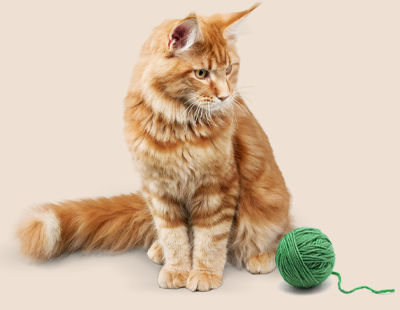Dried Flowers for Rabbits
Power-up your rabbit's diet with these delicious and natural dried fruit and flower treats.
We asked holistic vet Dr Nick Thompson MRCVS about how you can supercharge your rabbit's feed using ingredients that are fun to forage.
The great news is, it is incredibly easy to dry flowers and they can be a powerful addition to their usual hay feed. This is a great way to preserve delicate, seasonal produce for use throughout the year. You can give these to your rabbit as healthy and delicious treats that will provide them with essential minerals and vitamins.
Rabbit-safe flowers
For example:
Marigold is an excellent flower to aid digestive health in small animals. It also helps to accelerate the healing of bruises, slow healing wounds, ulcers and skin diseases.
Chamomile can be used as a natural pain relief remedy. It contains calming effects which should make your nervous rabbit easier to handle.
And Dandelion truly is a small herbivore super food. It has so many benefits, for example, aiding with; blood purification, respiratory ailments, reducing inflammation, bladder infections, diarrhoea, the milk flow of nursing does and supporting does after having a litter.
This is to name just a few!
We found the best way to dry flowers is to simply tie them together in small bunches and hang upside-down in a warm dry place for about a week. The full method is detailed below.

What flowers can bunnies not eat?
It is important you know which plants and flowers are safe for rabbits to eat. If you are in doubt of the identification of anything, make sure you leave it out. This particularly applies when out foraging since there are many plants you need to avoid including foxgloves, poppy, ivy, buttercups, bluebells, wild garlic, ragwort and nightshade. Also Hemlock is very dangerous, causing death quickly after being eaten. This can be easily confused with cow parsley and even yarrow, which rabbits enjoy very much. Make sure you look at the stalk and leaves when identifying plants, not just the flower.
In the garden/allotment you need to avoid all bulb plants including tulip, hyacinth, crocus, daffodil and primrose. The leaves, stems and flowers from the nightshade family (including tomatoes, pepper, aubergine and potato) are also very toxic to rabbits.
To help with your own selection, we have included a reference list of safe ingredients you can give to your rabbit, approved by holistic vet Dr Nick Thompson MRCVS. It is important that these are only given as an occasional treat, alongside their usual hay diet.
What flowers are rabbit friendly?

Drying flowers for rabbits
METHOD
- Avoid shop-bought flowers and select only flowers which haven't been exposed to pesticides. Rinse flowers first.
- Tie flower stems and hang upside down in bunches in a well-ventilated, warm, dry place such as a boiler cupboard, airing cupboard or attic. Alternatively they can be hung in direct sunlight such as in a greenhouse or above a window in your home.
- Once dry (ours took about a week), carefully remove the dried flowerheads and store in a clean, dry airtight jar in a dark place.
- If dried and stored correctly, flowers should keep for up to a year.
- Add a few flowers to your usual hay for extra tastiness and foraging fun.
What flowers and weeds can rabbits eat?

We also had fun drying some fruit. Whilst they can be sun-dried in warmer climates (air temperature needs to be at least 30°C) we found that oven drying provided excellent and consistent results here in the UK.
Drying fruits for rabbits
- Use organically grown fruit and vegetables where possible, which will be free from pesticides. Wash well first.
- Preheat oven on fan setting. Apples: 50°C / Strawberries: 90°C / Peaches: 90°C
- Line baking sheets with parchment paper or silicone baking mat.
- Remove core/stones from fruit as necessary. Slice fruit into uniform pieces, approximately 3mm thick.
- Dip fruit in fresh orange juice to avoid discolouration/browning.
- Arrange on parchment paper, leaving a little space between each one. Place in oven.
- Fruit will need to be turned once, about an hour before end of total cooking time. Open the oven door occasionally to remove any excess moisture. The fruit is ready when dehydrated and firm/leathery to touch. Apples: ~6 hours / Strawberries: ~2-3hours / Peaches: ~2-3hours
- Carefully remove the dried fruit from the oven and allow to cool completely.
- Store in a clean, dry airtight jar at room temperature. If dried and stored correctly the dried fruit can be stored for several months and given to your rabbit as an occasional treat... if you don't eat them all yourself!

Safe flowers for rabbits: |
| Chamomile - Matricaria chamomilla |
| Clover - Trifolium |
| Common Chickenweed - Stellaria media |
| Common Hollyhock - Alcea rosea |
| Coneflowers - Echinacea |
| Cornflower - Centaurea cyanus |
| Dahlia - Dahlia hortensis |
| Dandelion - Taraxacum officinale |
| Field Chickweed - Cerastium arvense |
| Field Pansy - Viola arvensis |
| Lavender - Lavandula angustifolia |
| Lemon Balm - Melissa officinalis |
| Mallow - Malva |
| Pot Marigold, Common Marigold - Calendula officinalis |
| Meadow Sage - Salvia pratensis |
| Nasturtium - Tropaeolum (majus, minus, peltophorum) |
| Oxeye Daisy - Leucanthemum vulgare |
| Parsley - Petroselinum crispum |
| Sunflower - Helianthus |
| Yarrow - Achillea millefolium |
Safe fruits for rabbits |
|
| Apples | Peaches |
| Apricots | Pears |
| Blackberries | Pineapple |
| Blueberries | Plums |
| Cherries | Raspberries |
| Cranberries | Strawberries |
Interested to learn more?
Why we need to rethink our approach to fleas, ticks and worms - read the article.
Taking care of animal health, naturally. Browse the range.

